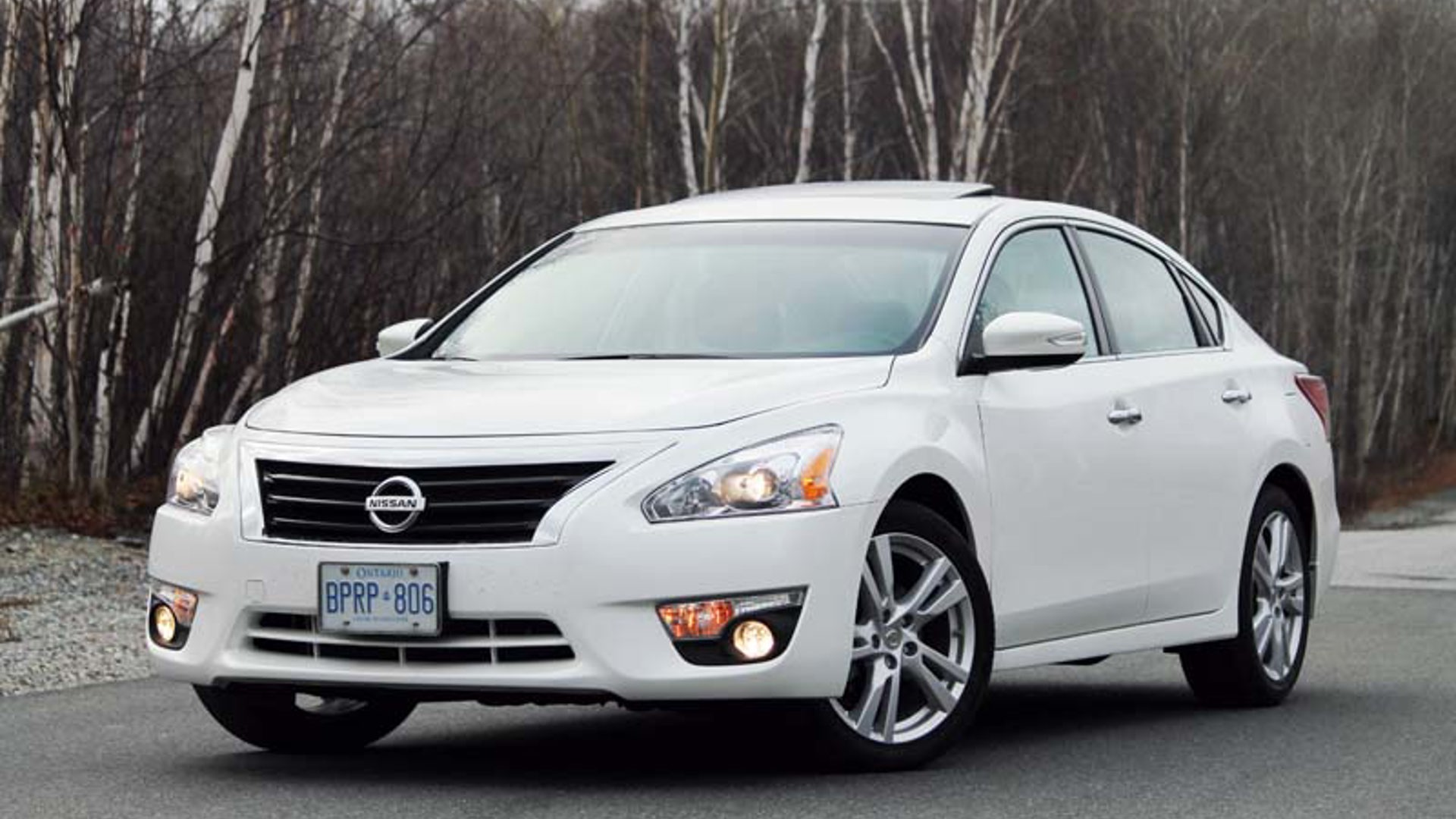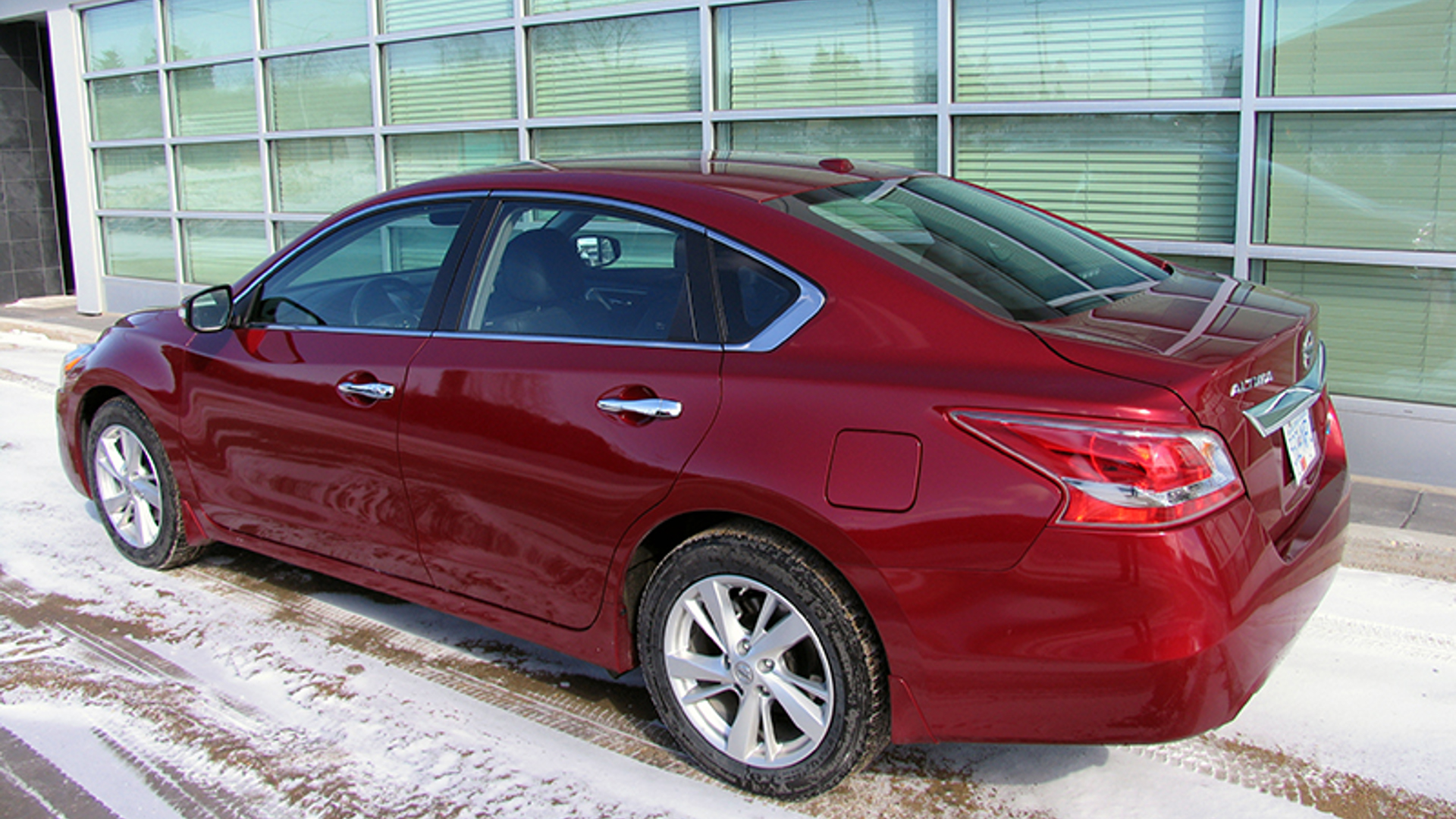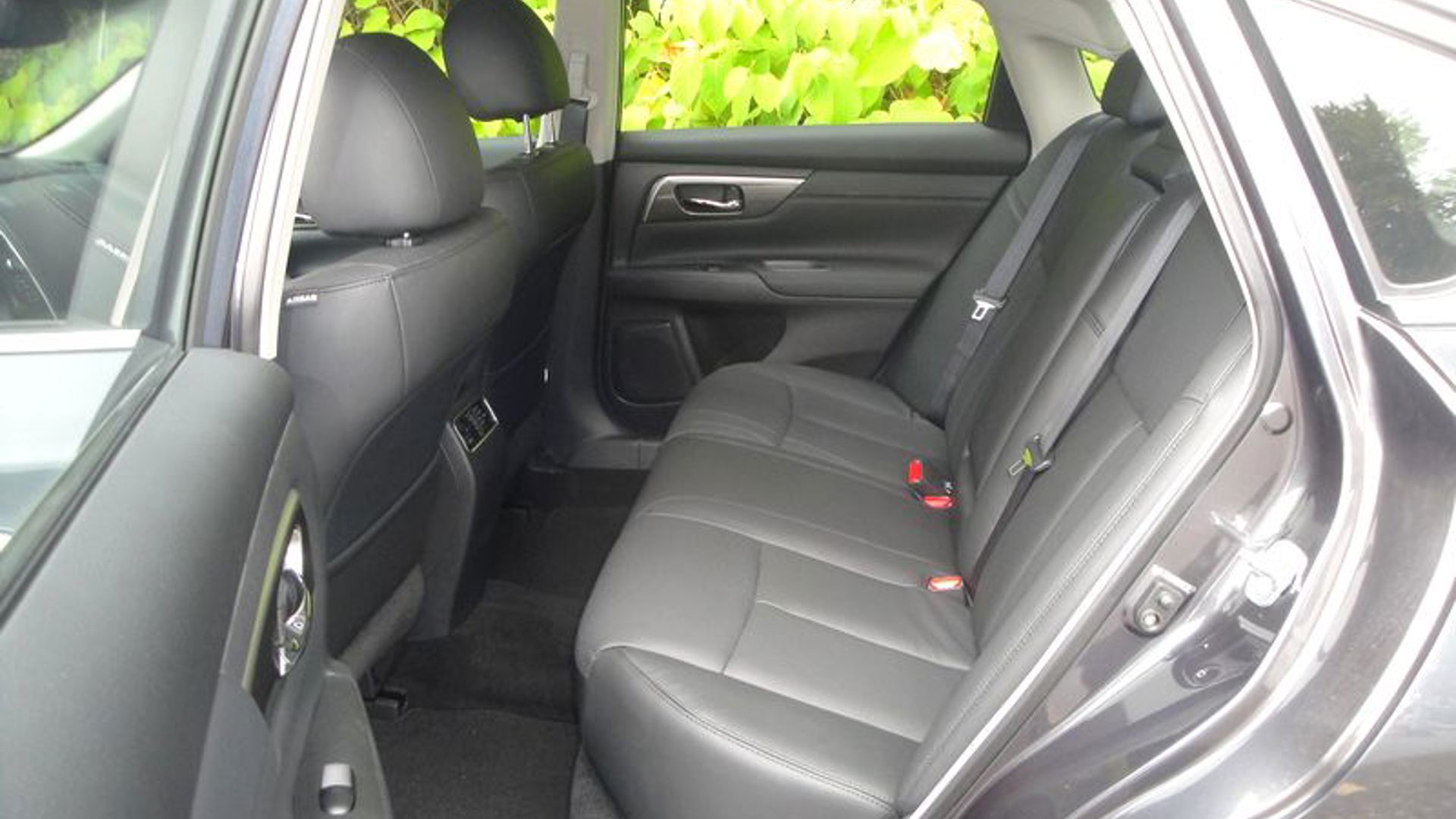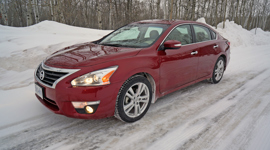Vehicle Type
Owners tend to report satisfaction with Altima’s big space, big V6 power, easy-to-use features, smooth performance, and good ride quality.
Sedan
History/Description
For 2013, Nissan fully re-vamped the popular Altima sedan, promising to take it to all-new levels, and deliver the best Altima yet. Upgraded styling, inside and out, helped deliver – as did a healthy dose of the latest in high tech, and a dynamically promising package that was now lighter and stronger than its predecessor.
This generation of Nissan Altima offered up plenty of space, including a surprisingly accommodating rear seat, and hearty trunk.
Feature content, depending on the model selected, may include a Bose stereo system, heated steering wheel, the NissanConnect multimedia and communication system, voice command, navigation, Bluetooth, a sunroof, and a back-up camera with a built-in cleaning system for a consistently clear view.
Altima’s more basic trim grades were the Altima 2.5 or 2.5S, with the SV and SL trim grades taking mid-line and fully loaded positions in the lineup. Key competitors included the Chevrolet Malibu, Honda Accord and Ford Fusion.
Engines
Altima was powered by Nissan’s proven 2.5-litre four-cylinder engine (182 horsepower), or their much-loved 3.5-litre V6 (270 horsepower). Both engines came attached to Nissan’s xTronic Continually Variable Transmission (CVT), and all models were front-wheel drive.
What Owners Like
Owners tend to report satisfaction with Altima’s big space, big V6 power, easy-to-use features, smooth performance, and good ride quality. The Bose stereo system is a feature-content favourite, too.
What Owners Dislike
Many owners wish for a smaller turning circle, and a little less noise in the cabin while cruising at higher speeds.
Here are some owner reviews of the 2013+ Nissan Altima
The Test Drive
Let’s start with a few basics, and then get into some specific checks for shoppers to consider ahead of their purchase of an Altima from this generation.
First off, you’ll want to check the vehicle’s recent and upcoming service requirements, confirming that it’s not due, or overdue, for any important maintenance or fluid changes. If it is, call this into your pricing negotiations and make arrangements to have the work completed.
Next, as it goes with vehicles running Nissan’s XTronic CVT transmission (which is, literally, every Altima from this generation), shoppers are advised to confirm that the transmission isn’t overdue for a fluid change, that there are no outstanding software updates to be installed to the transmission’s computer brain. Further – and this is key – be sure that the transmission fluid has never been changed by anyone other than a Nissan technician at a Nissan dealership, as failure to use a specific fluid, and a specific procedure to drain and refill it, may cause problems down the line. Note that most Canadian drivers are best to adhere to the “severe” service schedule when it comes to fluid change intervals, including those relating to the transmission.
On the matter of the Altima’s transmission, here’s a discussion thread where owners of this generation Altima raise their hand if they’ve experienced a well-documented problem with transmission failure at low miles in (mostly) launch-year 2013 models. Though reported issues are relatively small against total sales volume, readers can take two things from the discussion thread above:
First, if the transmission in the Altima you’re test driving even seems the slightest bit off in terms of smoothness, refinement or sound, be sure to have it inspected, or move to another unit. On your test drive, be sure to operate the vehicle at very light, light, moderate, and heavy throttle, to try and coax any unwanted sensations from the transmission. Note that in many cases, transmission failure occurred at very low miles and was warranty-covered.
Second, as the CVT transmission is covered by warranty for a given period, be sure to report any issues to your local dealer, so they can be checked and documented, as early as possible. This may help ease future warranty claims, if required.
Next up, note that some owners have reported sub-par headlight performance, so shoppers may want to make arrangements for a nighttime test drive, or budget for a lighting system upgrade with premium bulbs and polished (or replaced) headlight lenses, if needed.
Most shoppers are best to stick to stock when shopping for a used Altima, avoiding models with aftermarket parts installed. Though non-factory exhaust and intake parts may be just fine, an Altima that’s been lowered, turbocharged, or made to run non-factory engine computer software for added power could be a headache waiting to happen.
On board, confirm that all 12-volt power points work properly, that all steering-wheel-mounted controls are in working order, that you’re able to pair your phone via Bluetooth, and that the back-up camera engages quickly when reverse is selected. Give the door locks, latches and windows a full check over – confirming that all door latches (interior and exterior) work and feel fine, that all power window switches are in working order, and that all doors lock and unlock from all switches.
Shoppers are also advised to run the climate control on all settings, and to check for signs of unwanted noises from the fan motor, which could be a sign of its impending demise. Enough owners experienced fan motor failure that one of them created this DIY guide to replacing the fan motor at home, with simple tools.
Other issues reported by owners include possibly rattly interior trimmings or trunk mechanisms, occasional blinking from the stereo head unit, doors that chirp when opening in extreme cold, or doors that rub on fenders because of improper alignment (look for signs of worn paint or rubber trim where the front doors meet the front quarter panels).
On your drive, be on the lookout for clunking or clanking sounds from beneath the front of the vehicle, especially on higher mileage units. If detected, noises like these could indicate one or more worn suspension components that will need attention.
Finally, note that any visible Check Engine lights should be diagnosed via a scan tool before your purchase. The light may be illuminated for one of several reasons, including a bad fuel injector or ignition system component.
The Verdict
With all service records in good order and confirmation that the CVT transmission has been properly maintained, a standard pre-purchase inspection (PPI) should be all that’s needed for maximum peace of mind in a used Nissan Altima. Just to be safe from rare-but-notable transmission problems early on, we’d recommend a 2014 or newer unit, just to be safest.
Crash Test Ratings
IIHS: Top Safety Pick +
NHTSA: 5/5 Stars
Here’s a list of recalls.































